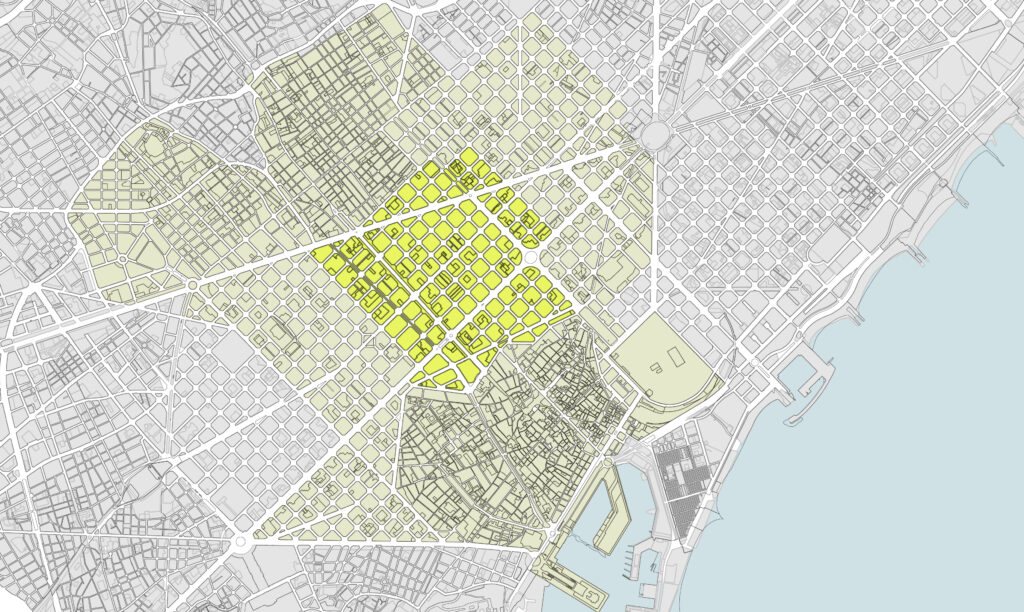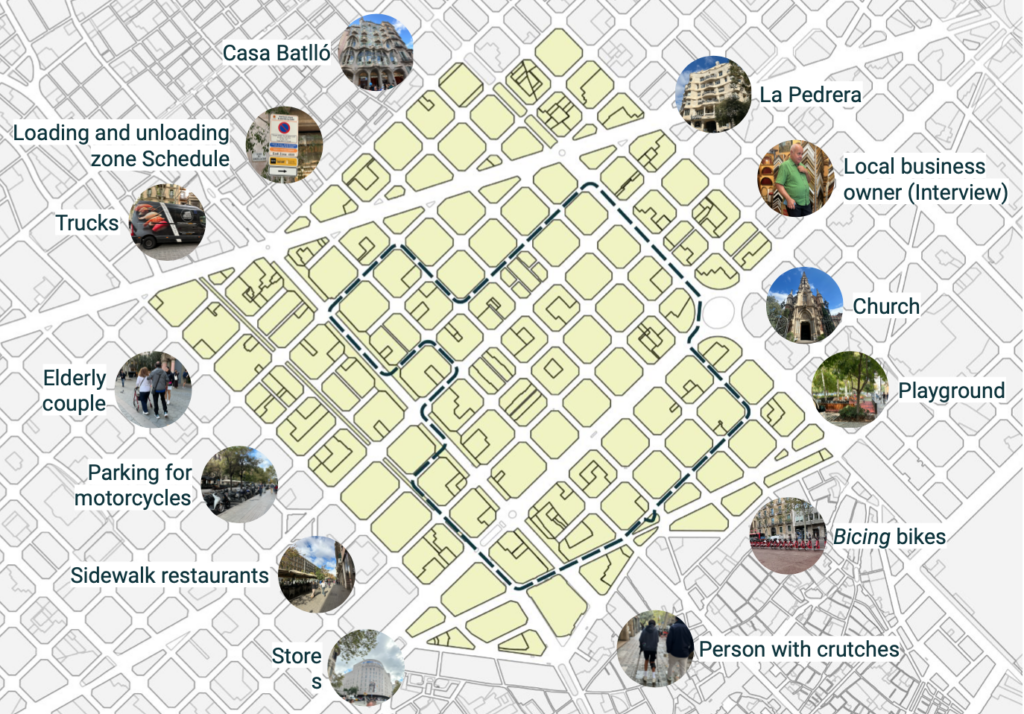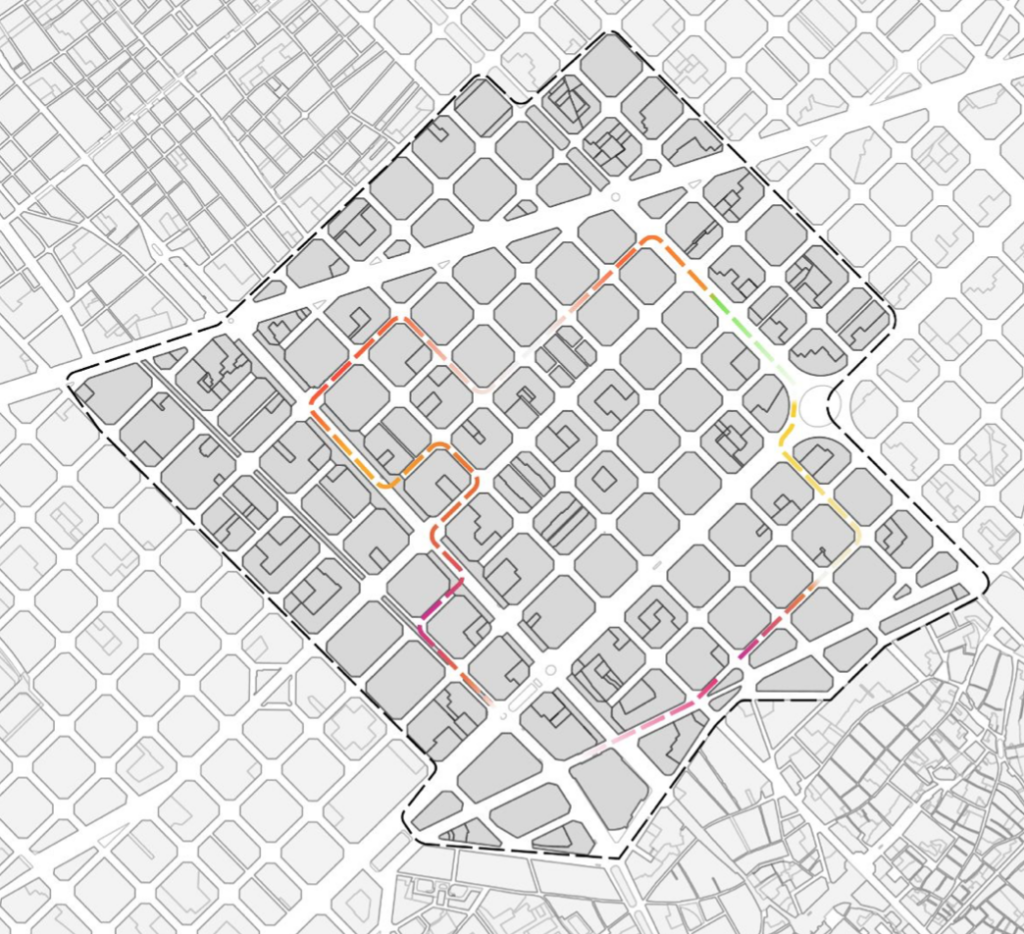La Dreta de l’Eixample, a vibrant neighborhood in Barcelona, begins at the renowned Plaça de Catalunya. This area is famous for its luxurious Passeig de Gràcia, lined with high-end boutiques and modernist architecture. The neighborhood not only showcases the grandeur of the Catalan textile bourgeoisie from the early 20th century but also stands out for its spacious apartments adorned with high ceilings and elaborate details. However, beneath this glamorous façade lies a complex narrative of urban quality of life, social challenges, and the stark reality of homelessness.

Architectural Richness and Data Insights

The architectural landscape of La Dreta de l’Eixample is a tapestry of styles – Roman, Renaissance, modernist, post-modernist, art nouveau, art deco, and chateau. Notable landmarks such as Casa Batlló and La Pedrera by Antoni Gaudí symbolize the modernist movement that flourished here.
Our data collection revealed that the neighborhood is home to approximately 43,715 residents, with a density of 207 inhabitants per hectare. Over the years, demographics have shifted, notably with an increase in young adults, especially women. The housing market reflects the area’s exclusivity (Idealista, s. f.), with an average rent of €6,745 for a 149 sqm apartment, and 956€ for a bedroom equating to 84% of the minimum wage in Spain (La Moncloa, 2024).
Air quality, according to our measurements, indicated higher pollution levels near Passeig de Gràcia and Plaça de Catalunya, emphasizing the need for sustainable urban planning amidst luxury living.


Urban Quality of Life
Urban quality of life refers to the overall well-being of residents in a particular urban area, encompassing various factors that contribute to their daily experiences and satisfaction. This includes access to essential services, safety, social interactions, and the physical environment. In examining urban quality of life, we focused on several aspects, including public facilities, educational institutions, and social interactions. La Dreta de l’Eixample boasts 52 schools and three elderly homes, contributing positively to neighborhood satisfaction. However, the challenges of urban density and crime rates—53832 reported crimes annually—pose significant concerns for residents.
Voices from the Community
Our interviews with locals provided invaluable insights into the neighborhood’s social fabric. While some were hesitant to engage, we spoke with Carles and Juan, lifelong residents who highlighted pressing issues such as the rise of homelessness since 2016, increasing racism, and the gentrification of their beloved neighborhood. They noted that while the area is becoming increasingly accessible, it has also attracted negative elements, including pickpockets and a visible homeless population.
The Homelessness Crisis
La Dreta de l’Eixample has the second-highest number of homeless individuals in Barcelona, following Ciutat Vella. With only one social help center in Fort Pienc, resources for the homeless are scarce. Residents expressed concerns for their safety and noted that many homeless individuals sleep surrounded by barriers for protection. Locals described a troubling increase in both Spanish and migrant individuals facing homelessness, emphasizing the urgent need for systemic solutions to address these challenges.
An observation that emerged during our exploration was the prevalence of hostile architecture in the neighborhood. This design approach, which includes features such as benches with armrests and spikes on ledges, aims to discourage loitering and resting in public spaces. While intended to maintain aesthetic appeal and deter certain behaviors, such design choices contribute to the marginalization of homeless individuals, making it increasingly difficult for them to find safe and welcoming spaces.

Locals described a troubling increase in both Spanish and migrant individuals facing homelessness, emphasizing the urgent need for systemic solutions to address these challenges.
A Call for Inclusive Urban Development
La Dreta de l’Eixample is a neighborhood rich in culture and history, yet it grapples with pressing social issues. As we explore the elegant architecture and vibrant streets, it is crucial to acknowledge the underlying challenges that impact the quality of life for all residents. A balanced approach to urban development must consider both the preservation of heritage and the urgent social needs of the community.

